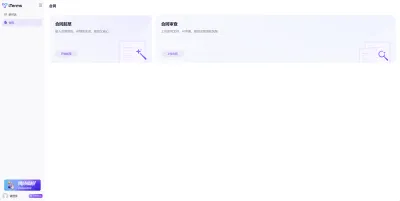<img src="https://raw.githubusercontent.com/wiki/obsidiandynamics/kafdrop/images/kafdrop-logo.png" width="90px" alt="logo"/> Kafdrop – Kafka Web UI 
<em>Kafdrop is a web UI for viewing Kafka topics and browsing consumer groups.</em> The tool displays information such as brokers, topics, partitions, consumers, and lets you view messages.

This project is a reboot of Kafdrop 2.x, dragged kicking and screaming into the world of Java 17+, Kafka 2.x, Helm and Kubernetes. It's a lightweight application that runs on Spring Boot and is dead-easy to configure, supporting SASL and TLS-secured brokers.
Features
- View Kafka brokers — topic and partition assignments, and controller status
- View topics — partition count, replication status, and custom configuration
- Browse messages — JSON, plain text, Avro and Protobuf encoding
- View consumer groups — per-partition parked offsets, combined and per-partition lag
- Create new topics
- View ACLs
- Support for Azure Event Hubs
Requirements
- Java 17 or newer
- Kafka (version 0.11.0 or newer) or Azure Event Hubs
Optional, additional integration:
- Schema Registry
Getting Started
You can run the Kafdrop JAR directly, via Docker, or in Kubernetes.
Running from JAR
java --add-opens=java.base/sun.nio.ch=ALL-UNNAMED \ -jar target/kafdrop-<version>.jar \ --kafka.brokerConnect=<host:port,host:port>,...
If unspecified, kafka.brokerConnect defaults to localhost:9092.
Note: As of Kafdrop 3.10.0, a ZooKeeper connection is no longer required. All necessary cluster information is retrieved via the Kafka admin API.
Open a browser and navigate to http://localhost:9000. The port can be overridden by adding the following config:
--server.port=<port> --management.server.port=<port>
Optionally, configure a schema registry connection with:
--schemaregistry.connect=http://localhost:8081
and if you also require basic auth for your schema registry connection you should add:
--schemaregistry.auth=username:password
Finally, a default message and key format (e.g. to deserialize Avro messages or keys) can optionally be configured as follows:
--message.format=AVRO
--message.keyFormat=DEFAULT
Valid format values are DEFAULT, AVRO, PROTOBUF. This can also be configured at the topic level via dropdown when viewing messages.
If key format is unspecified, message format will be used for key too.
Configure Protobuf message type
Option 1: Using Protobuf Descriptor
In case of protobuf message type, the definition of a message could be compiled and transmitted using a descriptor file. Thus, in order for kafdrop to recognize the message, the application will need to access to the descriptor file(s). Kafdrop will allow user to select descriptor and well as specifying name of one of the message type provided by the descriptor at runtime.
To configure a folder with protobuf descriptor file(s) (.desc), follow:
--protobufdesc.directory=/var/protobuf_desc
Option 2 : Using Schema Registry
In case of no protobuf descriptor file being supplied the implementation will attempt to create the protobuf deserializer using the schema registry instead.
Defaulting to Protobuf
If preferred the message type could be set to default as follows:
--message.format=PROTOBUF
Running with Docker
Images are hosted at hub.docker.com/r/obsidiandynamics/kafdrop.
Launch container in background:
docker run -d --rm -p 9000:9000 \ -e KAFKA_BROKERCONNECT=<host:port,host:port> \ -e SERVER_SERVLET_CONTEXTPATH="/" \ obsidiandynamics/kafdrop
Launch container with some specific JVM options:
docker run -d --rm -p 9000:9000 \ -e KAFKA_BROKERCONNECT=<host:port,host:port> \ -e JVM_OPTS="-Xms32M -Xmx64M" \ -e SERVER_SERVLET_CONTEXTPATH="/" \ obsidiandynamics/kafdrop
Launch container in background with protobuff definitions:
docker run -d --rm -v <path_to_protobuff_descriptor_files>:/var/protobuf_desc -p 9000:9000 \ -e KAFKA_BROKERCONNECT=<host:port,host:port> \ -e SERVER_SERVLET_CONTEXTPATH="/" \ -e CMD_ARGS="--message.format=PROTOBUF --protobufdesc.directory=/var/protobuf_desc" \ obsidiandynamics/kafdrop
Then access the web UI at http://localhost:9000.
Hey there! We hope you really like Kafdrop! Please take a moment to ⭐the repo or Tweet about it.
Running in Kubernetes (using a Helm Chart)
Clone the repository (if necessary):
git clone https://github.com/obsidiandynamics/kafdrop && cd kafdrop
Apply the chart:
helm upgrade -i kafdrop chart --set image.tag=3.x.x \ --set kafka.brokerConnect=<host:port,host:port> \ --set server.servlet.contextPath="/" \ --set cmdArgs="--message.format=AVRO --schemaregistry.connect=http://localhost:8080" \ #optional --set jvm.opts="-Xms32M -Xmx64M"
For all Helm configuration options, have a peek into chart/values.yaml.
Replace 3.x.x with the image tag of obsidiandynamics/kafdrop. Services will be bound on port 9000 by default (node port 30900).
Note: The context path must begin with a slash.
Proxy to the Kubernetes cluster:
kubectl proxy
Navigate to http://localhost:8001/api/v1/namespaces/default/services/http:kafdrop:9000/proxy.
Protobuf support via helm chart:
To install with protobuf support, a "facility" option is provided for the deployment, to mount the descriptor files folder, as well as passing the required CMD arguments, via option mountProtoDesc. Example:
helm upgrade -i kafdrop chart --set image.tag=3.x.x \ --set kafka.brokerConnect=<host:port,host:port> \ --set server.servlet.contextPath="/" \ --set mountProtoDesc.enabled=true \ --set mountProtoDesc.hostPath="<path/to/desc/folder>" \ --set jvm.opts="-Xms32M -Xmx64M"
Building
After cloning the repository, building is just a matter of running a standard Maven build:
$ mvn clean package
The following command will generate a Docker image:
mvn assembly:single docker:build
Docker Compose
There is a docker-compose.yaml file that bundles a Kafka/ZooKeeper instance with Kafdrop:
cd docker-compose/kafka-kafdrop docker-compose up
APIs
JSON endpoints
Starting with version 2.0.0, Kafdrop offers a set of Kafka APIs that mirror the existing HTML views. Any existing endpoint can be returned as JSON by simply setting the Accept: application/json header. Some endpoints are JSON only:
/topic: Returns a list of all topics.
OpenAPI Specification (OAS)
To help document the Kafka APIs, OpenAPI Specification (OAS) has been included. The OpenAPI Specification output is available by default at the following Kafdrop URL:
/v3/api-docs
It is also possible to access the Swagger UI (the HTML views) from the following URL:
/swagger-ui.html
This can be overridden with the following configuration:
springdoc.api-docs.path=/new/oas/path
You can disable OpenAPI Specification output with the following configuration:
springdoc.api-docs.enabled=false
CORS Headers
Starting in version 2.0.0, Kafdrop sets CORS headers for all endpoints. You can control the CORS header values with the following configurations:
cors.allowOrigins (default is *)
cors.allowMethods (default is GET,POST,PUT,DELETE)
cors.maxAge (default is 3600)
cors.allowCredentials (default is true)
cors.allowHeaders (default is Origin,Accept,X-Requested-With,Content-Type,Access-Control-Request-Method,Access-Control-Request-Headers,Authorization)
You can also disable CORS entirely with the following configuration:
cors.enabled=false
Topic Configuration
By default, you could delete a topic. If you don't want this feature, you could disable it with:
--topic.deleteEnabled=false
By default, you could create a topic. If you don't want this feature, you could disable it with:
--topic.createEnabled=false
Actuator
Health and info endpoints are available at the following path: /actuator
This can be overridden with the following configuration:
management.endpoints.web.base-path=<path>
Guides
Connecting to a Secure Broker
Kafdrop supports TLS (SSL) and SASL connections for encryption and authentication. This can be configured by providing a combination of the following files (placed into the Kafka root directory):
kafka.truststore.jks: specifying the certificate for authenticating brokers, if TLS is enabled.kafka.keystore.jks: specifying the private key to authenticate the client to the broker, if mutual TLS authentication is required.kafka.properties: specifying the necessary configuration, including key/truststore passwords, cipher suites, enabled TLS protocol versions, username/password pairs, etc. When supplying the truststore and/or keystore files, thessl.truststore.locationandssl.keystore.locationproperties will be assigned automatically.
Using Docker
The three files above can be supplied to a Docker instance in base-64-encoded form via environment variables:
docker run -d --rm -p 9000:9000 \ -e KAFKA_BROKERCONNECT=<host:port,host:port> \ -e KAFKA_PROPERTIES="$(cat kafka.properties | base64)" \ -e KAFKA_TRUSTSTORE="$(cat kafka.truststore.jks | base64)" \ # optional -e KAFKA_KEYSTORE="$(cat kafka.keystore.jks | base64)" \ # optional obsidiandynamics/kafdrop
Rather than passing KAFKA_PROPERTIES as a base64-encoded string, you can also place a pre-populated KAFKA_PROPERTIES_FILE into the container:
cat << EOF > kafka.properties security.protocol=SASL_SSL sasl.mechanism=SCRAM-SHA-512 sasl.jaas.config=org.apache.kafka.common.security.scram.ScramLoginModule required username="foo" password="bar" EOF docker run -d --rm -p 9000:9000 \ -v $(pwd)/kafka.properties:/tmp/kafka.properties:ro \ -v $(pwd)/kafka.truststore.jks:/tmp/kafka.truststore.jks:ro \ -v $(pwd)/kafka.keystore.jks:/tmp/kafka.keystore.jks:ro \ -e KAFKA_BROKERCONNECT=<host:port,host:port> \ -e KAFKA_PROPERTIES_FILE=/tmp/kafka.properties \ -e KAFKA_TRUSTSTORE_FILE=/tmp/kafka.truststore.jks \ # optional -e KAFKA_KEYSTORE_FILE=/tmp/kafka.keystore.jks \ # optional obsidiandynamics/kafdrop
It's sometimes needed to load extra classes, e.g. for a SASL client callback handler. To facilitate that, it is possible to mount a folder with extra JARs, like this:
cat << EOF > kafka.properties security.protocol=SASL_SSL sasl.jaas.config=software.amazon.msk.auth.iam.IAMLoginModule; sasl.client.callback.handler.class=software.amazon.msk.auth.iam.IAMClientCallbackHandler EOF mkdir extra-kafdrop-classes wget --directory-prefix=extra-kafdrop-classes https://repo1.maven.org/maven2/software/amazon/msk/aws-msk-iam-auth/1.0.0/aws-msk-iam-auth-1.0.0.jar docker run -d --rm -p 9000:9000 \ -v $(pwd)/kafka.properties:/tmp/kafka.properties:ro \ -v $(pwd)/kafka.truststore.jks:/tmp/kafka.truststore.jks:ro \ -v $(pwd)/kafka.keystore.jks:/tmp/kafka.keystore.jks:ro \ -v $(pwd)/extra-kafdrop-classes:/extra-classes:ro \ -e KAFKA_BROKERCONNECT=<host:port,host:port> \ -e KAFKA_PROPERTIES_FILE=/tmp/kafka.properties \ -e KAFKA_TRUSTSTORE_FILE=/tmp/kafka.truststore.jks \ # optional -e KAFKA_KEYSTORE_FILE=/tmp/kafka.keystore.jks \ # optional obsidiandynamics/kafdrop
Environment Variables
Basic configuration
| Name | Description |
|---|---|
KAFKA_BROKERCONNECT | Bootstrap list of Kafka host/port pairs. Defaults to localhost:9092. |
KAFKA_PROPERTIES | Additional properties to configure the broker connection (base-64 encoded). |
KAFKA_TRUSTSTORE | Certificate for broker authentication (base-64 encoded). Required for TLS/SSL. |
KAFKA_KEYSTORE | Private key for mutual TLS authentication (base-64 encoded). |
SERVER_SERVLET_CONTEXTPATH | The context path to serve requests on (must end with a /). Defaults to /. |
SERVER_PORT | The web server port to listen on. Defaults to 9000. |
MANAGEMENT_SERVER_PORT | The Spring Actuator server port to listen on. Defaults to 9000. |
SCHEMAREGISTRY_CONNECT | The endpoint of Schema Registry for Avro or Protobuf message |
SCHEMAREGISTRY_AUTH | Optional basic auth credentials in the form username:password. |
CMD_ARGS | Command line arguments to Kafdrop, e.g. --message.format or --protobufdesc.directory or --server.port. |
Advanced configuration
| Name | Description |
|---|---|
JVM_OPTS | JVM options. E.g.JVM_OPTS: "-Xms16M -Xmx64M -Xss360K -XX:-TieredCompilation -XX:+UseStringDeduplication -noverify" |
JMX_PORT | Port to use for JMX. No default; if unspecified, JMX will not be exposed. |
HOST | The hostname to report for the RMI registry (used for JMX). Defaults to localhost. |
KAFKA_PROPERTIES_FILE | Internal location where the Kafka properties file will be written to (if KAFKA_PROPERTIES is set). Defaults to kafka.properties. |
KAFKA_TRUSTSTORE_FILE | Internal location where the truststore file will be written to (if KAFKA_TRUSTSTORE is set). Defaults to kafka.truststore.jks. |
KAFKA_KEYSTORE_FILE | Internal location where the keystore file will be written to (if KAFKA_KEYSTORE is |
编辑推荐精选


潮际好麦
AI赋能电商视觉革命,一站式智能商拍平台
潮际好麦深耕服装行业,是国内AI试衣效果最好的软件。使用先进AIGC能力为电商卖家批量提供优质的、低成本的商拍图。合作品牌有Shein、Lazada、安踏、百丽等65个国内外头部品牌,以及国内10万+淘宝、天猫、京东等主流平台的品牌商家,为卖家节省将近85%的出图成本,提升约3倍出图效率,让品牌能够快速上架。


iTerms
企业专属的AI法律顾问
iTerms是法大大集团旗下法律子品牌,基于最先进的大语言模型(LLM)、专业的法律知识库和强大的��智能体架构,帮助企业扫清合规障碍,筑牢风控防线,成为您企业专属的AI法律顾问。


SimilarWeb流量提升
稳定高效的流量提升解决方案,助力品牌曝光
稳定高效的流量提升解决方案,助力品牌曝光


Sora2视频免费生成
最新版Sora2模型免费使用,一键生成无水印视频
最新版Sora2模型免费使用,一键生成无水印视频


Transly
实时语音翻译/同声传译工具
Transly是一个多场景的AI大语言模型驱动的同声传译、专业翻译助手,它拥有超精准的音频识别翻译能力,几乎零延迟的使用体验和支持多国语言可以让你带它走遍全球��,无论你是留学生、商务人士、韩剧美剧爱好者,还是出国游玩、多国会议、跨国追星等等,都可以满足你所有需要同传的场景需求,线上线下通用,扫除语言障碍,让全世界的语言交流不再有国界。


讯飞绘文
选题、配图、成文,一站式创作,让内容运营更高效
讯飞绘文,一个AI集成平台,支持写作、选题、配图、排版和发布。高效生成适用于各类媒体的定制内容,加速品牌传播,提升内容营销效果。


TRAE编程
AI辅助编程,代码自动修复
Trae是一种自适应的集成开发环境(IDE),通过自动化和多元协作改变开发流程。利用Trae,团队能够更快速、精确地编写和部署代码,从而提高编程效率和项目交付速度。Trae具备上下文感知和代码自动完成�功能,是提升开发效率的理想工具。


商汤小浣熊
最强AI数据分析助手
小浣熊家族Raccoon,您的AI智能助手,致力于通过先进的人工智能技术,为用户提供高效、便捷的智能服务。无论是日常咨询还是专业问题解答,小浣熊都能以快速、准确的响应满足您的需求,让您的生活更加智能便捷。


imini AI
像人一样思考的AI智能体
imini 是一款超级AI智能体,能根据人类指令,自主思考、自主完成、并且交付结果的AI智能体。


Keevx
AI数字人视频创作平台
Keevx 一款开箱即用的AI数字人视频创作平台,广泛适用于电商广告、企业培训与社媒宣传,让全球企业与个人创作者无需拍摄剪辑,就能快速生成多语言、高质量的专业视频。
推荐工具精选
AI云服务特惠
懂AI专属折扣关注微信公众号
最新AI工具、AI资讯
独家AI资源、AI项目落地

微信扫一扫关注公众号







